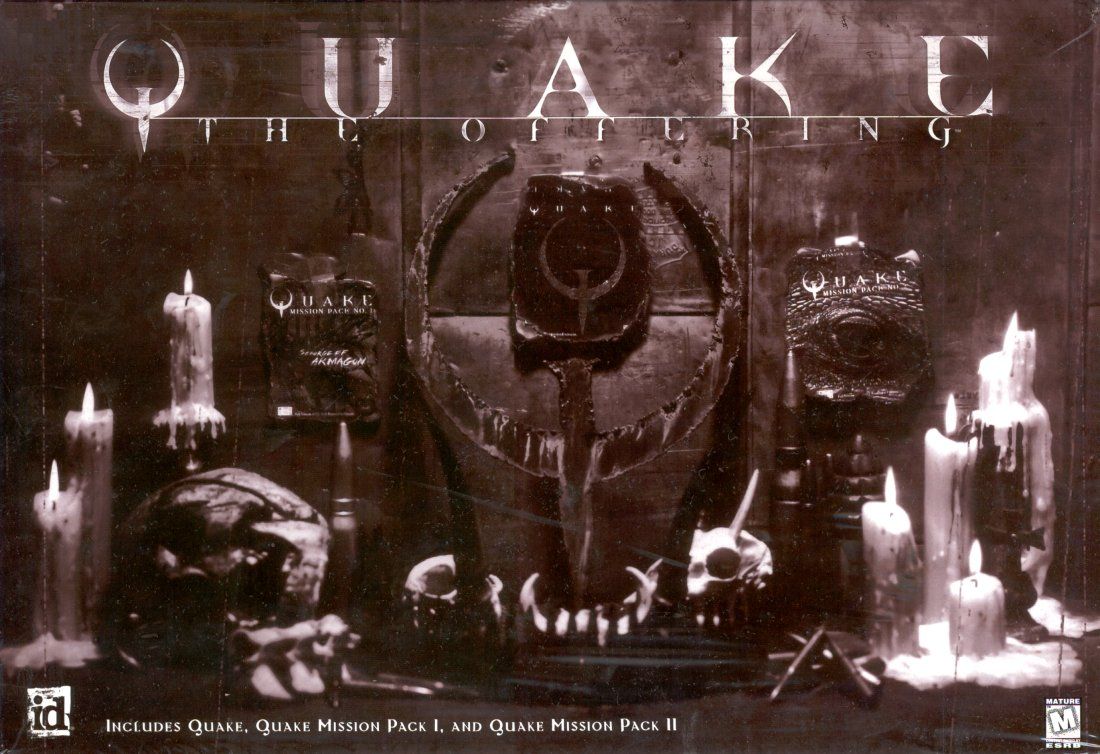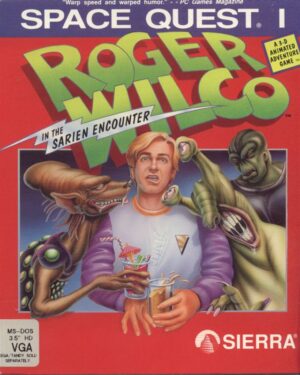Retro Replay Review
Gameplay
Quake: The Offering preserves the raw, relentless pace of the original Quake while bundling in its two celebrated mission packs, Scourge of Armagon and Dissolution of Eternity. The core mechanics remain as tight and responsive as ever: your weapons have satisfying weight and impact, the movement feels fluid, and the frantic encounters against relentless hordes keep you on your toes. Whether you’re strafing around hellish chambers in the base game or navigating the new architectural puzzles of Armagon, the compilation offers a seamless transition between each campaign.
(HEY YOU!! We hope you enjoy! We try not to run ads. So basically, this is a very expensive hobby running this site. Please consider joining us for updates, forums, and more. Network w/ us to make some cash or friends while retro gaming, and you can win some free retro games for posting. Okay, carry on 👍)
Each of the three campaigns brings its own twists to the classic formula. The original Quake’s rune-hunting design encourages exploration through sprawling levels, while Scourge of Armagon introduces more verticality and hidden shortcuts that reward keen-eyed players. Dissolution of Eternity experiments further with dynamic lighting and exotic locales, mixing up the pacing by challenging you with puzzles and trap-laden corridors that demand both quick reflexes and careful observation.
For fans of multiplayer, the compilation retains all the LAN and deathmatch options that made Quake a pioneering online shooter. Even on Linux, the first formal commercial port, networking remains solid; local multiplayer is a blast, and community servers still host classic modes such as Deathmatch, Domination and Rocket Arena. Mod support carries over too, meaning the custom maps and total conversion mods that flourished decades ago are ready to jump right back into on modern systems.
Graphics
Powered by id Software’s then-groundbreaking 3D engine, Quake: The Offering still holds up visually through its stark, gothic atmosphere. The textured walls, demonic statues and flickering torches create a sense of foreboding that few modern shooters can match, even if the polygon counts are modest by today’s standards. Each add-on ups the ante slightly, introducing new environments—from toxic laboratories to alien temples—that diversify the palette and set-pieces.
Despite the age of the engine, lighting remains Quake’s star attraction. Real-time lightmapping gives each corridor an ominous glow, and dynamic shadows amplify the tension during firefights. On the Linux release, these lighting effects are faithfully reproduced at higher resolutions, making the moody visuals crisper without compromising the haunting aesthetic that defined the series.
The character and enemy models have a chunky charm, and while textures may appear pixelated up close, the overall presentation delivers consistent frame rates and smooth animations. Minor enhancements such as widescreen support and improved filtering options on modern hardware help bridge the gap between nostalgia and playability, letting newcomers appreciate the artistry behind id’s original vision.
Story
Quake’s narrative is more atmospheric than plot-driven. You assume the role of a lone Ranger battling an otherworldly invasion led by the dark god Shub-Niggurath. The story unfolds through environmental cues, lore-filled monoliths, and text briefings rather than lengthy cutscenes or voiceovers. This minimalist approach warps your focus entirely onto exploration and combat, heightening immersion in the bleak, other-dimensional realms.
Scourge of Armagon builds on this framework by introducing an Armagon warlord determined to seize Shub-Niggurath’s power for himself. Though still light on dialogue, the mission pack enriches the Quake universe with new mission objectives—like flipping switches in timed sequences and navigating interconnected lift networks. These additions give you a tangible sense of progression as you thwart Armagon’s schemes, one level at a time.
Dissolution of Eternity takes you deeper into the multiverse, where ancient technology and cosmic horrors collide. The story remains deliberately sparse, but the exotic environments—from crystal caverns to mechanical realms—speak volumes. Each map feels like a page in a neglected grimoire, beckoning you to piece together the mythos through runic glyphs and hidden chambers. For players invested in lore, this compilation provides plenty of breadcrumbs to chase.
Overall Experience
Quake: The Offering represents both a historical milestone and an enduring action classic. By packaging the original game with its two mission packs on Linux, id Software not only broadened accessibility but also preserved a defining moment in FPS evolution. Newcomers gain a comprehensive, well-rounded shooter that emphasizes skill, level design and sheer atmosphere, while veterans can revisit the tension and triumphs of their first Quake campaigns without juggling multiple discs or OS hacks.
The compilation runs smoothly across modern setups, thanks to the robust Linux port that requires no additional data from other versions. Multiplayer remains as lively as ever, and modders continue to release new content that breathes fresh life into the trilogy. The user-friendly installation and configuration on contemporary hardware make this the definitive Quake package for anyone eager to experience the raw origins of 3D shooters.
Whether you’re drawn to the challenge of clearing each rune-powered realm, the thrill of rocket-fueled multiplayer brawls, or the eerie beauty of id’s pioneering engine, Quake: The Offering delivers. It stands as a testament to the game’s timeless design, ensuring that both long-time fans and curious newcomers can revel in the dark corridors and explosive firefights that defined a genre.
 Retro Replay Retro Replay gaming reviews, news, emulation, geek stuff and more!
Retro Replay Retro Replay gaming reviews, news, emulation, geek stuff and more!




Reviews
There are no reviews yet.